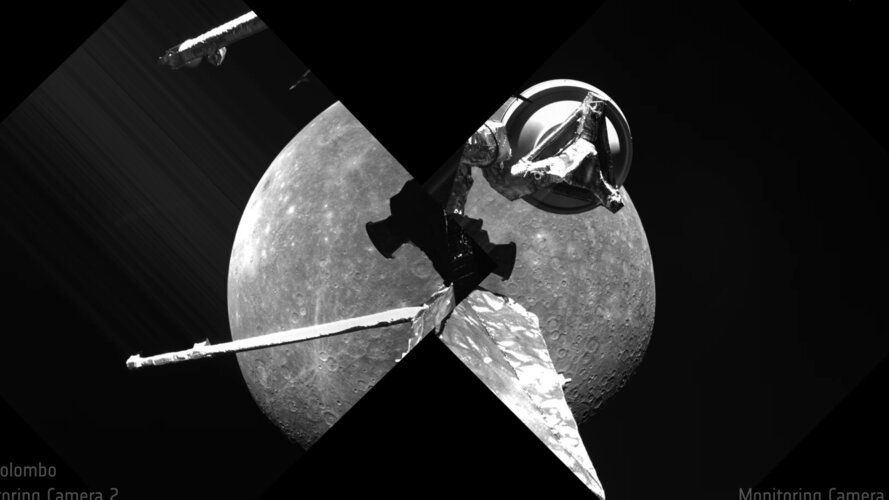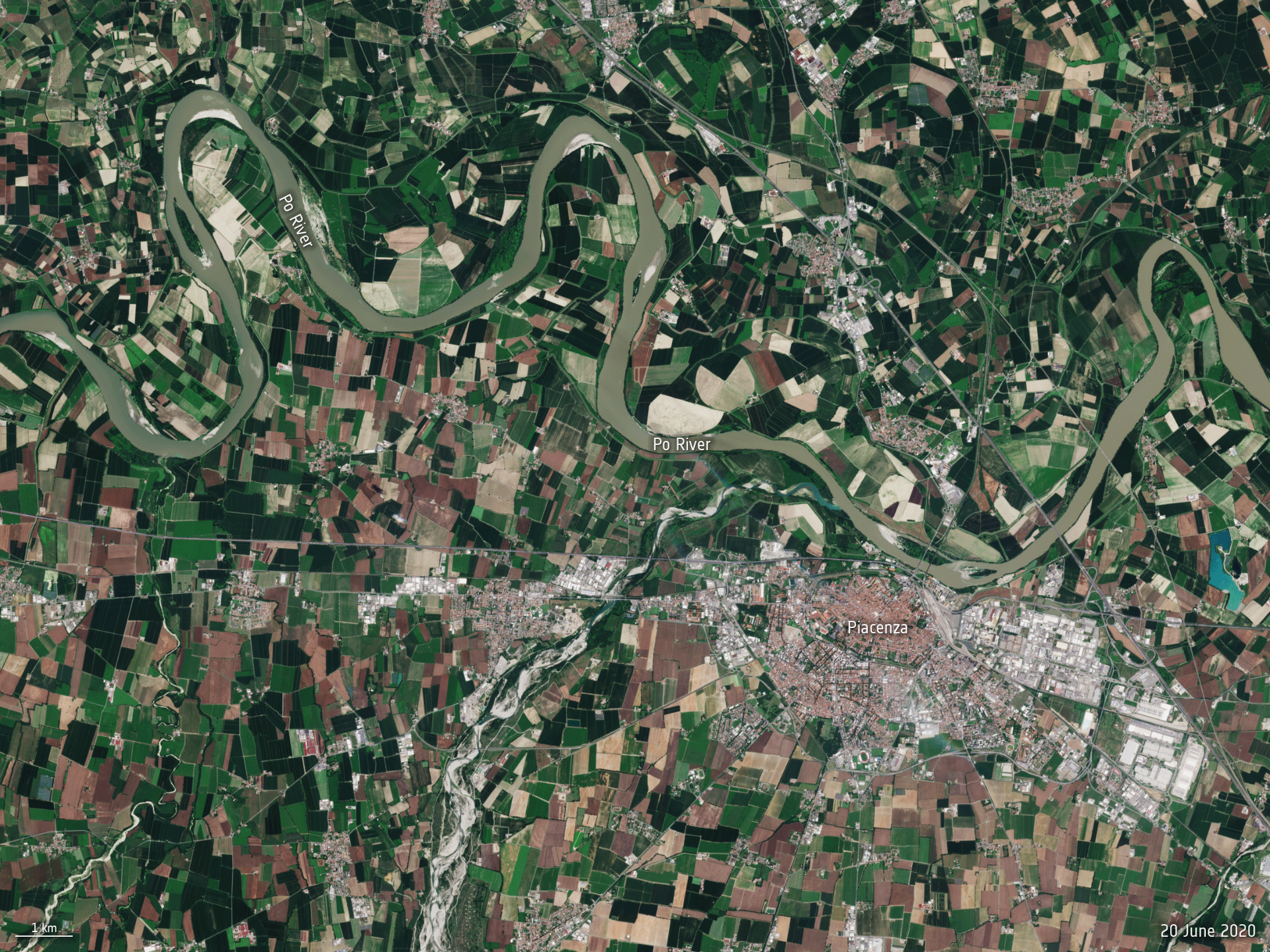NASA blasts off from Australian Outback in 'historic' launch
Monday, 27 June 2022 10:17 NASA's first-ever launch from a commercial site outside of the United States blasted off from Australia's Outback late Sunday, in a "historic" moment for the country's space industry.
In the first of three planned launches from the Arnhem Space Centre, the rocket, carrying technology likened to a "mini Hubble" telescope, lifted off - blasted about 350 kilometres (218 miles) into the night s
NASA's first-ever launch from a commercial site outside of the United States blasted off from Australia's Outback late Sunday, in a "historic" moment for the country's space industry.
In the first of three planned launches from the Arnhem Space Centre, the rocket, carrying technology likened to a "mini Hubble" telescope, lifted off - blasted about 350 kilometres (218 miles) into the night s NSSA releases report on "United States Space Command: Progress And Opportunities"
Monday, 27 June 2022 10:17 The National Security Space Association (NSSA) has released a report entitled "United States Space Command: Progress and Opportunities". Produced by the Association's Moorman Center for Space Studies, the report notes the importance of the USSPACECOM mission to U.S. national security and economic well-being, describes recent progress of the Command in reaching an "initial operational capability"
The National Security Space Association (NSSA) has released a report entitled "United States Space Command: Progress and Opportunities". Produced by the Association's Moorman Center for Space Studies, the report notes the importance of the USSPACECOM mission to U.S. national security and economic well-being, describes recent progress of the Command in reaching an "initial operational capability" BepiColombo’s second Mercury flyby
Monday, 27 June 2022 07:00 Video:
00:01:06
Video:
00:01:06
A beautiful sequence of 56 images taken by the monitoring cameras on board the ESA/JAXA BepiColombo mission as the spacecraft made its second close flyby of its destination planet Mercury on 23 June 2022.
The compilation includes images from two monitoring cameras (MCAM) onboard the Mercury Transfer Module, which provides black-and-white snapshots at 1024 x 1024 pixel resolution. The MCAMs also capture parts of the spacecraft: MCAM-2 sees the Mercury Planetary Orbiter’s medium-gain antenna and magnetometer boom, while the high-gain antenna is in the MCAM-3 field-of-view.
The image sequences lasted about 15 minutes starting soon after closest approach
Po River dries up
Monday, 27 June 2022 06:30 Image:
The Po River, the longest river in Italy, is hitting record low water levels after months without heavy rainfall. This Copernicus Sentinel-2 animation reveals how the river has significantly shrunk between June 2020 and June 2022.
Image:
The Po River, the longest river in Italy, is hitting record low water levels after months without heavy rainfall. This Copernicus Sentinel-2 animation reveals how the river has significantly shrunk between June 2020 and June 2022. Axiom and Collins only bidders for NASA spacesuit contracts
Sunday, 26 June 2022 22:09
The two companies NASA selected earlier this month to develop spacesuits for the International Space Station and Artemis lunar missions were the only companies to bid on the project, according to agency procurement documents.
Lunar Reconnaissance Orbiter spots rocket impact site on Moon
Sunday, 26 June 2022 05:13 Astronomers discovered a rocket body heading toward a lunar collision late last year. Impact occurred March 4, with NASA's Lunar Reconnaissance Orbiter later spotting the resulting crater. Surprisingly the crater is actually two craters, an eastern crater (18-meter diameter, about 19.5 yards) superimposed on a western crater (16-meter diameter, about 17.5 yards).
The double crater was unex
Astronomers discovered a rocket body heading toward a lunar collision late last year. Impact occurred March 4, with NASA's Lunar Reconnaissance Orbiter later spotting the resulting crater. Surprisingly the crater is actually two craters, an eastern crater (18-meter diameter, about 19.5 yards) superimposed on a western crater (16-meter diameter, about 17.5 yards).
The double crater was unex NASA Announces Launch Delay for Its Psyche Asteroid Mission
Sunday, 26 June 2022 05:13 An independent assessment team will review possible options for next steps, including estimated costs. NASA announced Friday the Psyche asteroid mission, the agency's first mission designed to study a metal-rich asteroid, will not make its planned 2022 launch attempt.
Due to the late delivery of the spacecraft's flight software and testing equipment, NASA does not have sufficient time to c
An independent assessment team will review possible options for next steps, including estimated costs. NASA announced Friday the Psyche asteroid mission, the agency's first mission designed to study a metal-rich asteroid, will not make its planned 2022 launch attempt.
Due to the late delivery of the spacecraft's flight software and testing equipment, NASA does not have sufficient time to c Arecibo Observatory scientists help unravel surprise asteroid mystery
Sunday, 26 June 2022 05:13 When asteroid 2019 OK suddenly appeared barreling toward Earth on July 25, 2019, Luisa Fernanda Zambrano-Marin and the team at the Arecibo Observatory in Puerto Rico jumped into action.
After getting an alert, the radar scientists zoned in on the asteroid, which was coming from Earth's blind spot - solar opposition. Zambrano-Marin and the team had 30 minutes to get as many radar readings a
When asteroid 2019 OK suddenly appeared barreling toward Earth on July 25, 2019, Luisa Fernanda Zambrano-Marin and the team at the Arecibo Observatory in Puerto Rico jumped into action.
After getting an alert, the radar scientists zoned in on the asteroid, which was coming from Earth's blind spot - solar opposition. Zambrano-Marin and the team had 30 minutes to get as many radar readings a NASA EXPRESS Racks achieve 1 million hours of service on ISS
Sunday, 26 June 2022 05:13 NASA science research on the International Space Station reached an extraordinary milestone June 14.
The vital, versatile EXPRESS Racks - properly known as "EXpedite the PRocessing of Experiments to the Space Station" multipurpose payload shelving units - logged 1 million hours of combined powered duty on station. That's the equivalent of nearly 115 years' worth of scientific research comp
NASA science research on the International Space Station reached an extraordinary milestone June 14.
The vital, versatile EXPRESS Racks - properly known as "EXpedite the PRocessing of Experiments to the Space Station" multipurpose payload shelving units - logged 1 million hours of combined powered duty on station. That's the equivalent of nearly 115 years' worth of scientific research comp Curiosity latest drilling attempt a success - Sols 3514-3516
Sunday, 26 June 2022 05:13 The MSL team is very happy this week, because our first drill attempt since last November was successful! This Front Hazcam image shows the drill being extracted from the new drill hole, which is surrounded by drill tailings as expected.
This is one of several times in MSL's mission that drilling had to be re-designed to overcome an anomaly, again requiring lots of careful planning and tes
The MSL team is very happy this week, because our first drill attempt since last November was successful! This Front Hazcam image shows the drill being extracted from the new drill hole, which is surrounded by drill tailings as expected.
This is one of several times in MSL's mission that drilling had to be re-designed to overcome an anomaly, again requiring lots of careful planning and tes Multiple Lab Analyses of Antarctic Minerals Offer a Better Understanding of Mars
Sunday, 26 June 2022 05:13 Results of multiple and complementary lab analyses of minerals found in samples of material from Antarctica could give scientists a better understanding of the surface and subsurface environment of Mars, and indicate locations of potentially habitable subsurface locations, says a new paper by Planetary Science Institute Research Scientist Elizabeth C. Sklute.
Samples of intermittent brine
Results of multiple and complementary lab analyses of minerals found in samples of material from Antarctica could give scientists a better understanding of the surface and subsurface environment of Mars, and indicate locations of potentially habitable subsurface locations, says a new paper by Planetary Science Institute Research Scientist Elizabeth C. Sklute.
Samples of intermittent brine Efficient satellite downlink with a Ka band dual circular polarization transmitter
Sunday, 26 June 2022 05:13 Low earth orbit (LEO) satellites are being increasingly used for environmental monitoring of the earth, as well for logistic purposes, such as the navigation of maritime vessels. The data transmitted from the satellite terminals to the receivers on Earth, known as "downlink," is steadily increasing and, as a result, requires new frequency domains.
In this regard, the Ka band for satellite
Low earth orbit (LEO) satellites are being increasingly used for environmental monitoring of the earth, as well for logistic purposes, such as the navigation of maritime vessels. The data transmitted from the satellite terminals to the receivers on Earth, known as "downlink," is steadily increasing and, as a result, requires new frequency domains.
In this regard, the Ka band for satellite U.K. government announces new space sustainability measures
Saturday, 25 June 2022 19:15
The British government announced a series of measures June 23, from regulations to funding active debris removal projects, intended to make the country a leader in space sustainability.
The post U.K. government announces new space sustainability measures appeared first on SpaceNews.
NASA asteroid mission on hold due to late software delivery
Saturday, 25 June 2022 09:11
New head of Space Force acquisitions looks to get back to basics
Friday, 24 June 2022 21:03
Frank Calvelli, assistant secretary of the Air Force for space acquisition and integration, told SpaceNews one of his priorities is to impose discipline in procurement programs
The post New head of Space Force acquisitions looks to get back to basics appeared first on SpaceNews.
